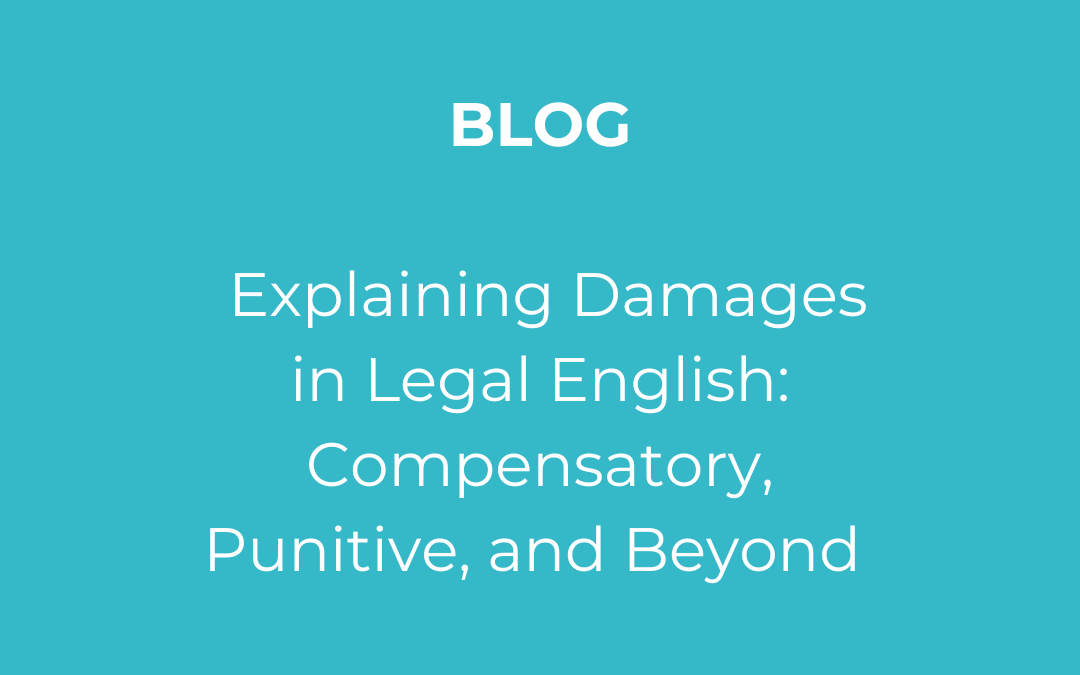Blog Post #5 – Explaining Damages in Legal English: Compensatory, Punitive, and Beyond
Understanding the different types of damages is essential in common law contexts—especially for Brazilian lawyers engaging in cross-border litigation or contract drafting. These concepts often differ from Brazilian terminology like danos morais or indenização, and clarity is crucial to avoid misunderstandings in international documents.
Types of Damages Explained
-
Compensatory Damages
These are intended to restore the plaintiff to the position they would have been in but for the wrongdoing. They include:
- Economic (Special) Damages: quantifiable losses like medical expenses, lost wages, or property damage.
- Non-Economic (General) Damages: subjective harm, such as pain and suffering, emotional distress, or loss of enjoyment of life.
-
Punitive Damages
These are not about compensation. Instead, they punishthe defendant for particularly egregious misconduct and serve as a deterrent to others. Typically awarded only when wrongdoing is malicious, reckless, or grossly negligent.
- Other Variants
- Nominal Damages: symbolic sums (like $1) acknowledging a legal wrong with no significant loss.
- Liquidated vs. Penal Damages: Pre-agreed amounts (liquidated) can be enforceable; excessive ones (penal) may be deemed invalid.
Grammar & Usage Nugget
Countable vs. Uncountable Nouns in Legal English
A frequent difficulty when talking about damages is knowing whether the noun is countable or uncountable.
- Damage (singular, uncountable) refers to harm in general.
“The flood caused extensive damage to the property.” - Damages (plural, countable in legal usage) refers to monetary compensation awarded by a court.
“The court awarded damages to the claimant.
Mixing them up can lead to confusion, particularly in cross-border work. Brazilian lawyers often equate danos directly with damage, but in English legal contexts, damages has a specific, technical meaning.
Expert Tip
When drafting or translating, always clarify which category of damages you’re referring to. For example, danos morais in Brazil is often broader than non-economic damages in the U.S. label. Consider adding brief explanations or parentheticals, such as: “Plaintiff seeks non-economic (general) damages for emotional distress (danos morais).”
Understanding damages in legal English demands more than direct translation—it requires attention to legal context, purpose, and drafting conventions across jurisdictions. Any time you need support in drafting or translating these concepts, I’m here to help.
